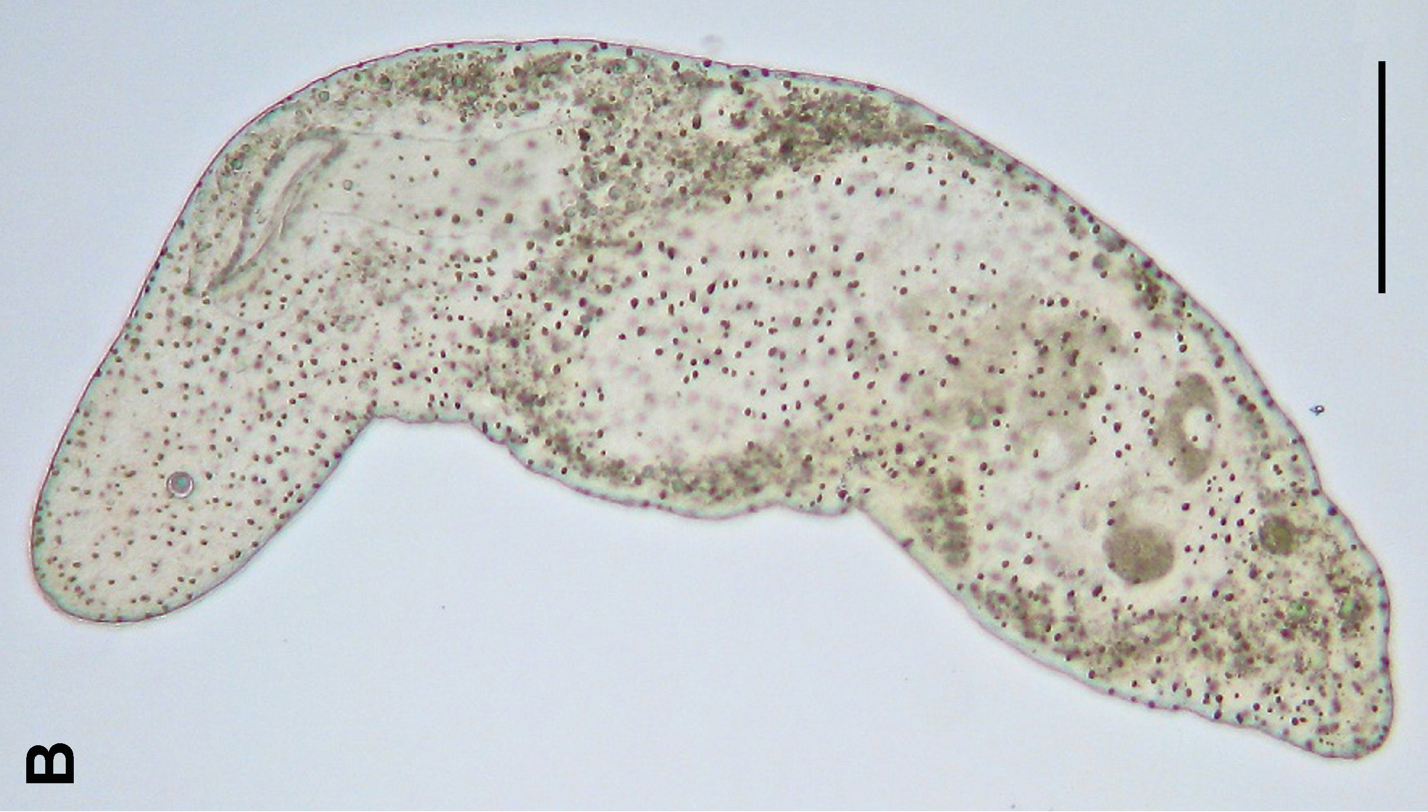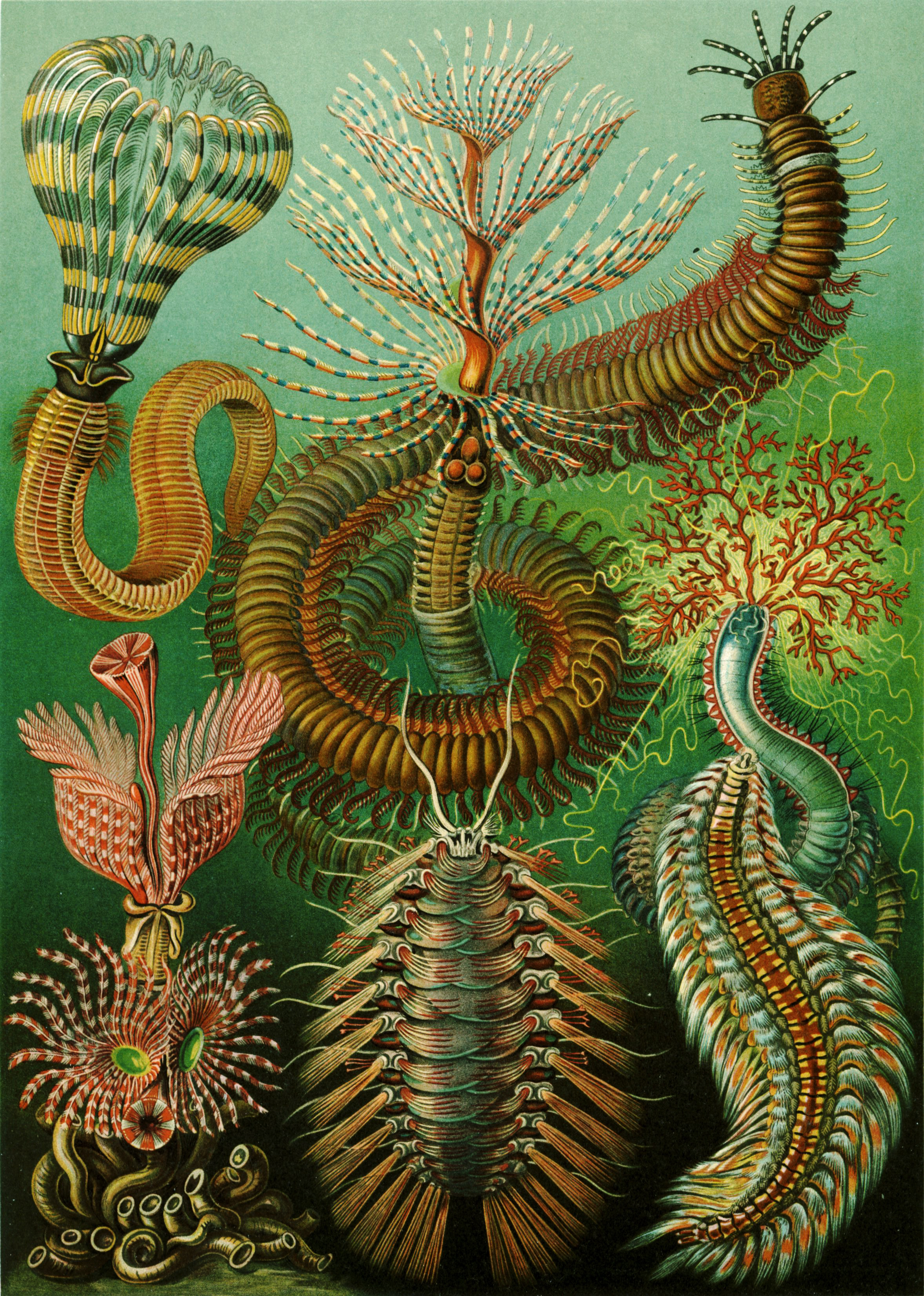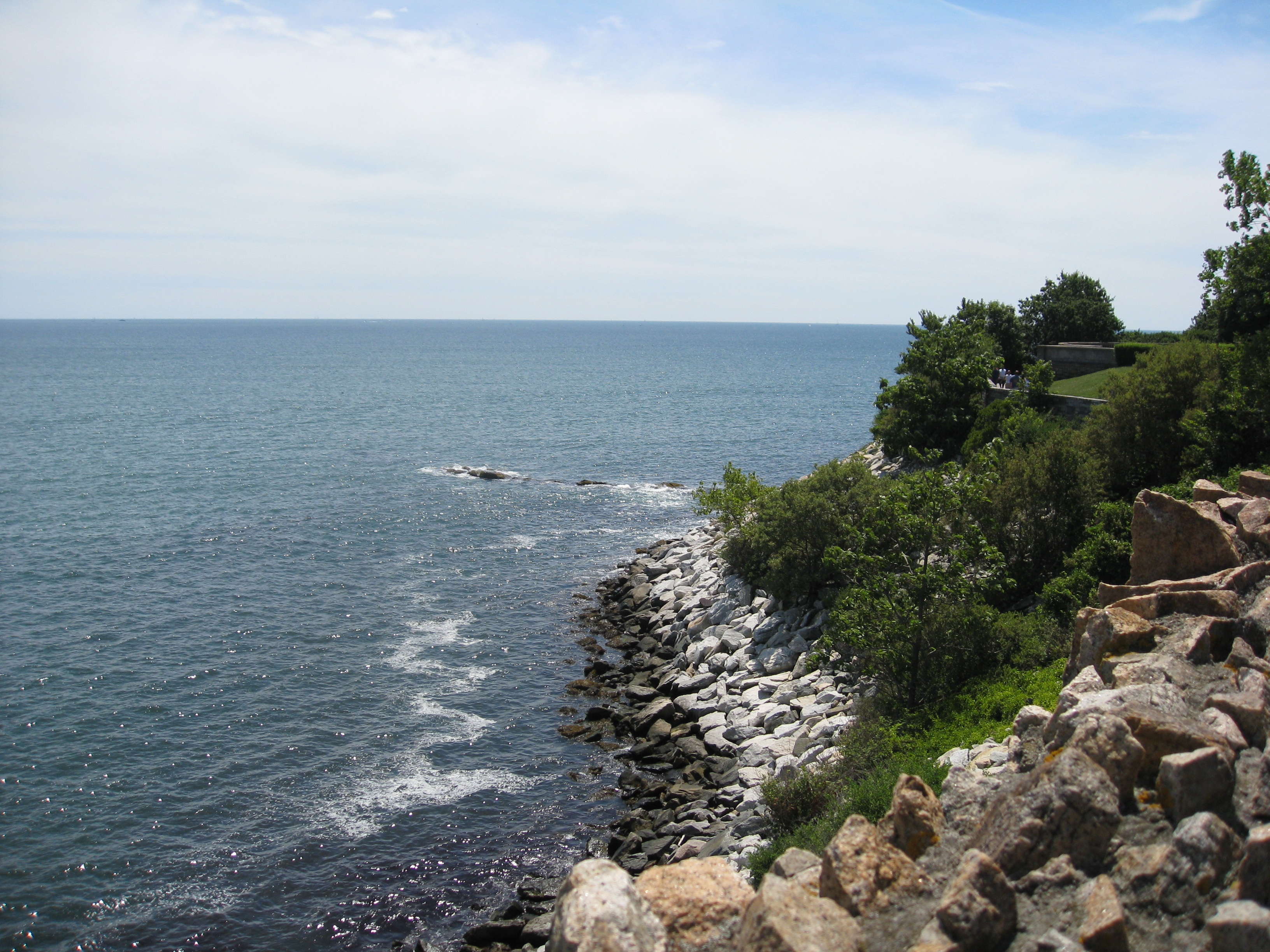|
Starfish
Starfish or sea stars are star-shaped echinoderms belonging to the class Asteroidea (). Common usage frequently finds these names being also applied to ophiuroids, which are correctly referred to as brittle stars or basket stars. Starfish are also known as asteroids due to being in the class Asteroidea. About 1,900 species of starfish live on the seabed in all the world's oceans, from warm, tropical zones to frigid, polar regions. They are found from the intertidal zone down to abyssal depths, at below the surface. Starfish are marine invertebrates. They typically have a central disc and usually five arms, though some species have a larger number of arms. The aboral or upper surface may be smooth, granular or spiny, and is covered with overlapping plates. Many species are brightly coloured in various shades of red or orange, while others are blue, grey or brown. Starfish have tube feet operated by a hydraulic system and a mouth at the centre of the oral or lower su ... [...More Info...] [...Related Items...] OR: [Wikipedia] [Google] [Baidu] |
Echinoderm
An echinoderm () is any member of the phylum Echinodermata (). The adults are recognisable by their (usually five-point) radial symmetry, and include starfish, brittle stars, sea urchins, sand dollars, and sea cucumbers, as well as the sea lilies or "stone lilies". Adult echinoderms are found on the sea bed at every ocean depth, from the intertidal zone to the abyssal zone. The phylum contains about 7,000 living species, making it the second-largest grouping of deuterostomes, after the chordates. Echinoderms are the largest entirely marine phylum. The first definitive echinoderms appeared near the start of the Cambrian. The echinoderms are important both ecologically and geologically. Ecologically, there are few other groupings so abundant in the biotic desert of the deep sea, as well as shallower oceans. Most echinoderms are able to reproduce asexually and regenerate tissue, organs, and limbs; in some cases, they can undergo complete regeneration from a single limb. ... [...More Info...] [...Related Items...] OR: [Wikipedia] [Google] [Baidu] |
Fromia Monilis
''Fromia monilis'', common name necklace starfish or tiled starfish, is a species of starfish belonging to the family Goniasteridae. Description ''Fromia monilis'' can reach a diameter of about . Tips of the arms and the disc center of this starfish are bright red, while the remaining parts are paler, forming large plates. Fromia monilis (Seastar).jpg Image:Fromia monilis (Sea star).jpg, In Timor. Image:Elegant Necklace Starfish (Fromia monilis) (8488880713).jpg, ''Fromia monilis'' (Sabah, Malaisia) The appearance of this sea star can be highly variable (colors, plates, presence of plates on the central disc, armpits...), and its identification using picture can be difficult, as many other species (like ''Fromia nodosa'') can have a very similar aspect. Distribution This species can be found in the Indian Ocean and Western Pacific Ocean, Western Pacific, from the Andaman islands up to Australia and Japan. Ecology It feeds on encrusting sponges, detritus or small invertebra ... [...More Info...] [...Related Items...] OR: [Wikipedia] [Google] [Baidu] |
Valvatida
The Valvatida are an order of starfish in the class Asteroidea, which contains 695 species in 172 genera in 17 families. Description The order encompasses both tiny species, which are only a few millimetres in diameter, like those in the genus '' Asterina'', and species which can reach up to 75 cm, such as species in the genus '' Thromidia''. Almost all species in this order have five arms with tube feet. This order is primarily identified by the presence of conspicuous marginal ossicles, which characterize most of the species. Most members of this order have five arms and two rows of tube feet with suckers. Some species have paxillae and in some, the main pedicellariae are clamp-like and recessed into the skeletal plates. This group includes the cushion star, and the leather star. Families According to the World Register of Marine Species, the following families are included in Valvatida: * family Acanthasteridae Gervais, 1841 * family Archasteridae Viguier, 187 ... [...More Info...] [...Related Items...] OR: [Wikipedia] [Google] [Baidu] |
Paxillosida
The Paxillosida are a large order of sea stars. Characteristics Paxillosida adults lack an anus and have no suckers on their tube feet. They do not develop the brachiolaria stage in their early development.Matsubara, M., Komatsu, M., Araki, T., Asakawa, S., Yokobori, S.-I., Watanabe, K. & Wada, H. (2005) The phylogenetic status of Paxillosida (Asteroidea) based on complete mitochondrial DNA sequences. Molecular Genetics and Evolution, 36, 598–605 They possess marginal plates, and have sessile pedicellariae. They mostly inhabit soft-bottomed environments of sand or mud. Systematics Recent analyses suggest Paxillosida may be a sister taxon of Asterina. The order is divided into these families: * family Astropectinidae Gray, 1840 * family Ctenodiscidae Sladen, 1889 * family Goniopectinidae Verrill, 1889 * family Luidiidae Sladen, 1889 * family Porcellanasteridae Sladen, 1883 * family Pseudarchasteridae * family Radiasteridae Fisher, 1916 File:Astropecten aranciacus Sardegna09 ... [...More Info...] [...Related Items...] OR: [Wikipedia] [Google] [Baidu] |
Marine Invertebrates
Marine invertebrates are the invertebrates that live in marine habitats. Invertebrate is a blanket term that includes all animals apart from the vertebrate members of the chordate phylum. Invertebrates lack a vertebral column, and some have evolved a shell or a hard exoskeleton. As on land and in the air, marine invertebrates have a large variety of body plans, and have been categorised into over 30 phyla. They make up most of the macroscopic life in the oceans. Evolution The earliest animals were marine invertebrates, that is, vertebrates came later. Animals are multicellular eukaryotes, and are distinguished from plants, algae, and fungi by lacking cell walls. Marine invertebrates are animals that inhabit a marine environment apart from the vertebrate members of the chordate phylum; invertebrates lack a vertebral column. Some have evolved a shell or a hard exoskeleton. The earliest animals may belong to the genus '' Dickinsonia'', 571 million to 539 million years ago ... [...More Info...] [...Related Items...] OR: [Wikipedia] [Google] [Baidu] |
Velatida
The Velatida are an order of sea stars containing about 200 species in five families. These sea stars normally have thick bodies with large discs. Description and characteristics This order contains mostly deep or cold seas sea stars, often with a wide distribution (sometimes global). They have a pentagonal or star shape, with between 5 and 15 arms. Their skeleton is weakly developed, which confers them a good flexibility, and numerous papillae on the aboral surface allow them to breathe in poorly oxygenated waters. Their pedicellariae are often provided with spines. The smallest are Caymanostellidae (between 0,5 and 3 cm) and the biggest Pterasteridae (up to 30 cm). Taxonomy New molecular evidence now suggests a relationship between some velatid and valvatid families. List of families according to World Register of Marine Species The World Register of Marine Species (WoRMS) is a taxonomic database that aims to provide an authoritative and comprehensive list ... [...More Info...] [...Related Items...] OR: [Wikipedia] [Google] [Baidu] |
Star Polygon
In geometry, a star polygon is a type of non- convex polygon. Regular star polygons have been studied in depth; while star polygons in general appear not to have been formally defined, certain notable ones can arise through truncation operations on regular simple and star polygons. Branko Grünbaum identified two primary definitions used by Johannes Kepler, one being the regular star polygons with intersecting edges that don't generate new vertices, and the second being simple isotoxal concave polygons. The first usage is included in polygrams which includes polygons like the pentagram but also compound figures like the hexagram. One definition of a ''star polygon'', used in turtle graphics, is a polygon having 2 or more turns ( turning number and density), like in spirolaterals.Abelson, Harold, diSessa, Andera, 1980, ''Turtle Geometry'', MIT Press, p.24 Etymology Star polygon names combine a numeral prefix, such as '' penta-'', with the Greek suffix ''-gram'' (in t ... [...More Info...] [...Related Items...] OR: [Wikipedia] [Google] [Baidu] |
Brisingida
The Brisingids are deep-sea-dwelling starfish in the order Brisingida. Description These starfish have between 6 to 18 long, attenuated arms which they use for suspension feeding. Other characteristics include a single series of marginals, a fused ring of disc plates, the lack of actinal plates, a spool-like ambulacral column, reduced abactinal plates, and crossed pedicellariae. They are 40 times the size of disk radius and have 7-20 flexible spiny arms. Distribution Brisingida occur in a number of deep-sea locations, particularly in the Caribbean and New Zealand New Zealand ( mi, Aotearoa ) is an island country in the southwestern Pacific Ocean. It consists of two main landmasses—the North Island () and the South Island ()—and over 700 List of islands of New Zealand, smaller islands. It is the .... This type of species are found of varying size especially in the eastern Pacific Ocean at a depth of 1,820–2,418 m. Taxonomy The Brisingida contain two families, ... [...More Info...] [...Related Items...] OR: [Wikipedia] [Google] [Baidu] |
Tube Feet
Tube feet (technically podia) are small active tubular projections on the oral face of an echinoderm, whether the arms of a starfish, or the undersides of sea urchins, sand dollars and sea cucumbers; they are more discreet though present on brittle stars, and have only a feeding function in feather stars. They are part of the water vascular system. Structure and function Tube feet function in locomotion, feeding, and respiration. The tube feet in a starfish are arranged in grooves along the arms. They operate through hydraulic pressure. They are used to pass food to the oral mouth at the center, and can attach to surfaces. A starfish that is inverted turns one arm over and attaches it to a solid surface, and levers itself the right way up. Tube feet allow these different types of animals to stick to the ocean floor and move slowly. Each tube foot consists of two parts: the ampulla and the podium. The ampulla is a water-filled sac contained in the body of the animal that co ... [...More Info...] [...Related Items...] OR: [Wikipedia] [Google] [Baidu] |
Water Vascular System
The water vascular system is a hydraulic system used by echinoderms, such as sea stars and sea urchins, for locomotion, food and waste transportation, and respiration. The system is composed of canals connecting numerous tube feet. Echinoderms move by alternately contracting muscles that force water into the tube feet, causing them to extend and push against the ground, then relaxing to allow the feet to retract. The exact structure of the system varies somewhat between the five classes of echinoderm. The system is part of the coelomic cavities of echinoderms, together with the haemal coelom (or haemal system), perivisceral coelom, gonadal coelom and perihaemal coelom. Other terms sometimes used to refer to the water vascular system are "ambulacral system" and "aquiferous system". In the past, "aquiferous system" was also used to refer to many unrelated invertebrate structures, but today, it is restricted to water channels in sponges and the hydrostatic skeleton of some mollu ... [...More Info...] [...Related Items...] OR: [Wikipedia] [Google] [Baidu] |
Abyssal Zone
The abyssal zone or abyssopelagic zone is a layer of the pelagic zone of the ocean. "Abyss" derives from the Greek word , meaning bottomless. At depths of , this zone remains in perpetual darkness. It covers 83% of the total area of the ocean and 60% of Earth's surface. The abyssal zone has temperatures around through the large majority of its mass. Due to there being no light, there are no plants producing oxygen, which instead primarily comes from ice that had melted long ago from the polar regions. The water along the seafloor of this zone is actually devoid of oxygen, resulting in a death trap for organisms unable to quickly return to the oxygen-enriched water above. This region also contains a much higher concentration of nutrient salts, like nitrogen, phosphorus, and silica, due to the large amount of dead organic material that drifts down from the above ocean zones and decomposes. The water pressure can reach up to 76 megapascal. The area below the abyssal zone is the sp ... [...More Info...] [...Related Items...] OR: [Wikipedia] [Google] [Baidu] |
Intertidal Zone
The intertidal zone, also known as the foreshore, is the area above water level at low tide and underwater at high tide (in other words, the area within the tidal range). This area can include several types of habitats with various species of life, such as seastars, sea urchins, and many species of coral with regional differences in biodiversity. Sometimes it is referred to as the '' littoral zone'' or '' seashore'', although those can be defined as a wider region. The well-known area also includes steep rocky cliffs, sandy beaches, bogs or wetlands (e.g., vast mudflats). The area can be a narrow strip, as in Pacific islands that have only a narrow tidal range, or can include many meters of shoreline where shallow beach slopes interact with high tidal excursion. The peritidal zone is similar but somewhat wider, extending from above the highest tide level to below the lowest. Organisms in the intertidal zone are adapted to an environment of harsh extremes, living in w ... [...More Info...] [...Related Items...] OR: [Wikipedia] [Google] [Baidu] |





